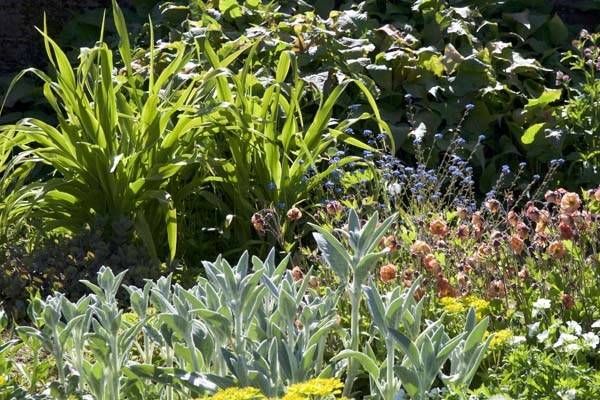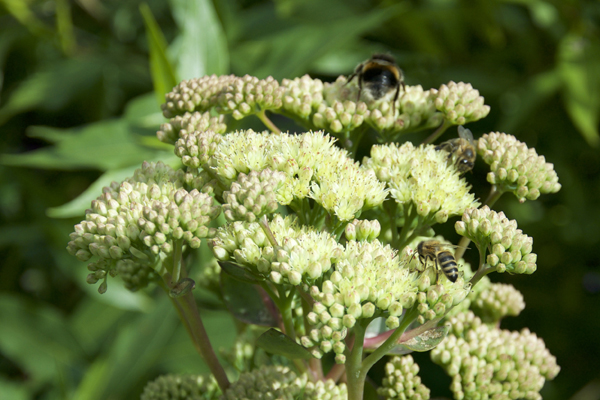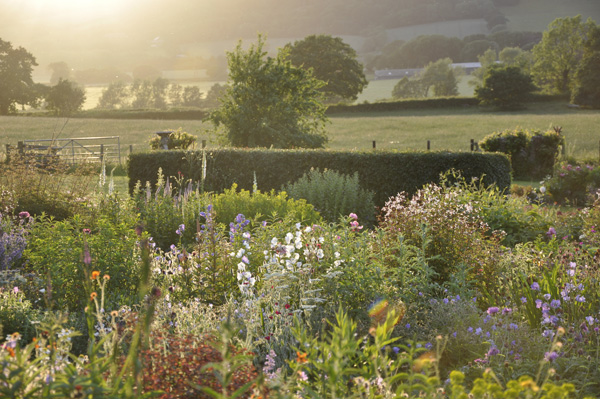Looking after perennials
Perennials are extremely easy to look after in the garden. They require little attention for much for much of the year, but certain plants might need a little attention during the growing period.
Staking
As perennials grow, those with large flowers, such as peonies, may need support to keep the flowers upright. This may not be necessary in the first year, but in later years when the flowers get bigger and heavier, you may need to stake the stems using hoops or canes. Put supports in early in the season as you will be less likely to damage the plant. The stems will also grow through and disguise their supports. Plants that topple over in high wind or heavy rain will also need support and short hoops are a great help.
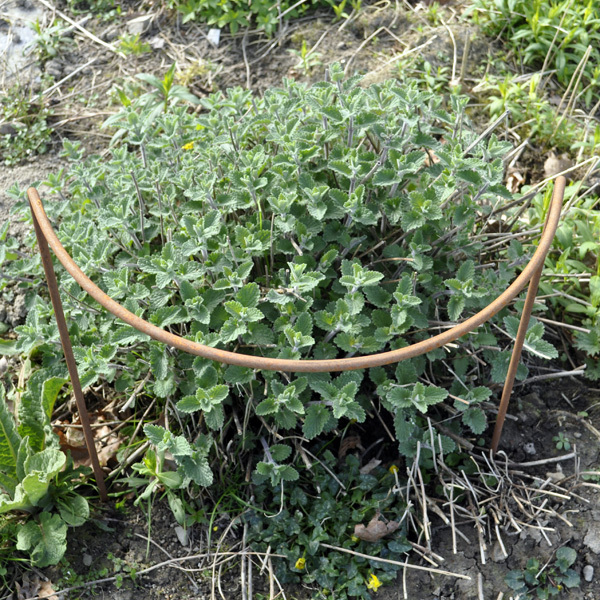
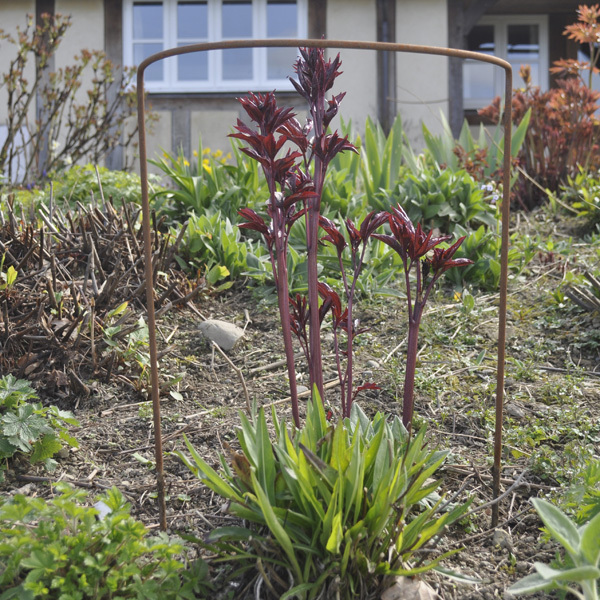
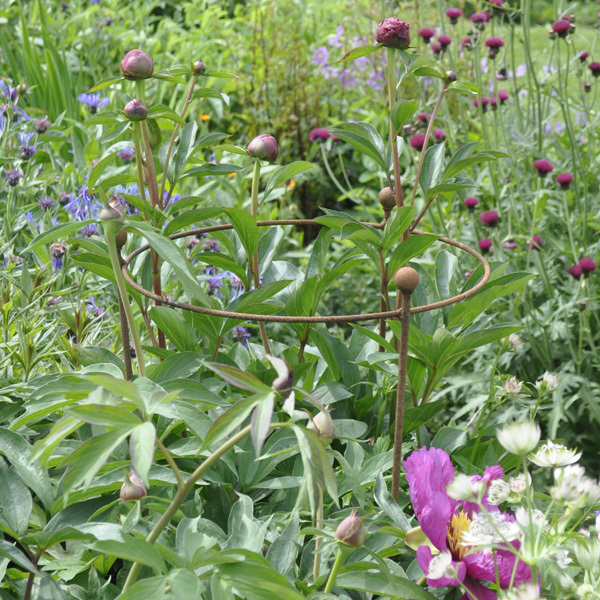
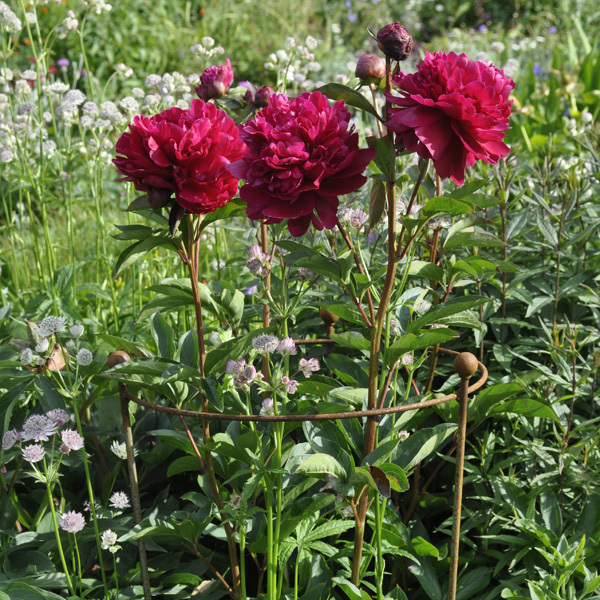
Right to left: metal or plastic hoops should be placed around the plant as the plant starts into growth
Dividing
There are three reasons for dividing perennials
- to increase the number of plants
- to reduce the size of a plant
- to make it more vigorous.
When to divide
The time to divide a plant is once the foliage has died back in autumn. Cut off the old top growth, lift the plant out using a fork, then knock as much soil off the roots as you can. Using a large carving knife to cut through the clump. Alternatively (I have never done it) you can use two border forks placed back to back to prise a mature, clumping perennial with large roots apart.
Size of divisions
The divisions should not be too small, although this depends on the plant. After three years, the crown of some perennials can be up to 30cm across. Dividing these might yield 20 plants or more, but the sections would probably be very small. It’s best to create larger divisions with lots of healthy shoots and strong roots. This should provide you with enough sections to replant with some over to give away. You can then discard the old, woody central section.
Fertilising
I almost never feed my perennial plantings, as a perennials’ native habitats tend to be rough, wild areas so, in the main, they don’t require much feeding. Overfeed them and many produce lots of top growth and no flowers. However, if your border hasn’t been touched for some years, it may well benefit from a sprinkling of granular fertiliser in spring or autumn. Incorporating well-rotted farmyard manure or home-made garden compost into the soil is even more beneficial. Just don’t overdo it: too much feeding will result in giants or heavy, floppy plants.
Dead-heading and cutting back
Dead-heading
I do try and cut off dead flowers as they fade throughout the summer, concentrating my efforts on those plants that look really untidy. It’s best to take off the flowering stem, not just the individual dead flowers. Removing flowering stems and cutting back the foliage to ground level also helps certain plants produce fresh growth and sometimes more flowers. Trimming back also keeps the plant tidy if it becomes unruly.
These include:
- Achillea
- Astrantia (but not A. maxima)
- Campanula
- Centaurea
- Echinops
- Geranium.
Cutting back in autumn
I begin to cut perennials back once the old leaves and stems have turned brown. Initially I choose only the tattiest plants; the neatest, most upright will provide interest and structure for many months until winter winds flatten them.
Cutting back proper starts in spring, anytime between late February and March, just before new growth emerges. I also remove any weeds beneath the old stems to clean the ground for the summer to come.
We have found the easiest method to cut back our borders at White Hopton (which are quite big) is using a strimmer. We do not strim plants that are woody, such as Intersectional peonies and Euphorbia. These are better done using a pair of secateurs. Softer foliage is removed by hand using small garden hand shears.
